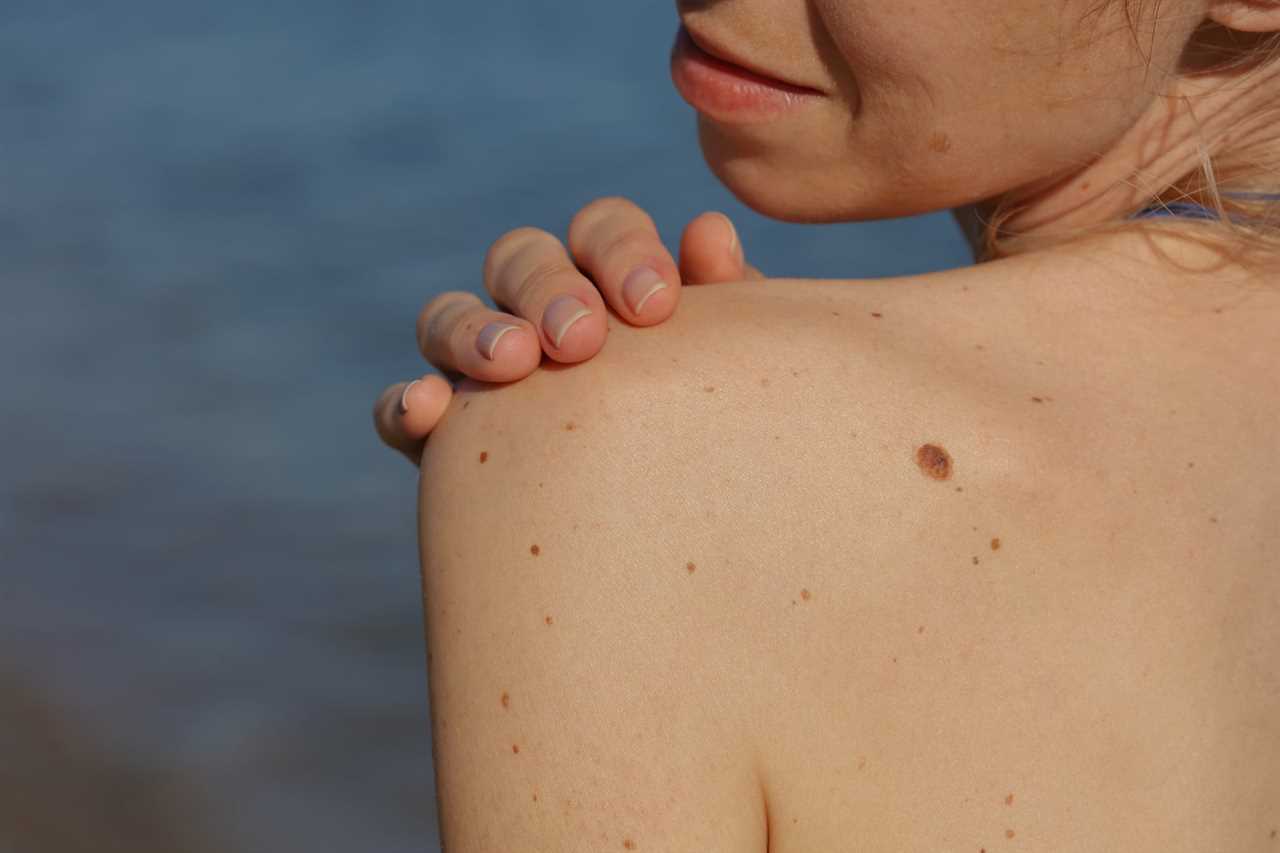
Understanding the Prevalence and Deadliness of Melanoma
The statistics about skin cancer's prevalence are enough to make you immediately add 10 sunscreens to your shopping cart — like how one in five Americans will develop some form of skin cancer by the age of 70 (in 2022, Khloé Kardashian underwent treatment for a precancerous tumor), or how having more than five sunburns in your lifetime can double your chance of developing melanoma. And there's no sugarcoating the fact that, of all types of skin cancer, melanoma is the most deadly, accounting for 80 percent of total skin cancer deaths.
The Importance of Early Detection and Treatment
But there's a but! With early detection and treatment, there is a 99 percent survival rate for stage one melanoma, according to the Skin Cancer Foundation. (Phew.) This is exactly why it's so crucial to understand melanoma risk factors and prevention tactics, how to identify skin abnormalities, and your own family history. To get the lowdown on everything you need to know about melanoma, we spoke with a dermatologist, ahead.
What Is Melanoma?
"Melanoma is a type of skin cancer that develops from the cells that control the skin's pigment," Naana Boakye, MD, MPH, FAAD, a board-certified dermatologist and founder of Bergen Dermatology, tells us. All melanomas are cancerous, Dr. Boakye says, so "it is essential to seek medical professional help once you notice a new dark spot appear on your body that begins to change size, shape, and color."
Identifying Different Types of Melanoma
Just like those airport security messages, if you see something, say something. So how do you know if your unusual spot is a potential threat? You book a visit to your dermatologist, stat. But what does melanoma look like? According to Dr. Boakye, here are the most common types of melanoma and the identifiers your dermatologist will look for to diagnose you.
Understanding the Causes and Risk Factors
Scientifically speaking, melanoma is caused by an abnormality in melanocytes, the skin cells responsible for producing and containing melanin (the pigment that gives skin its color). While we're all born with the same amount of melanocytes, our individual skin colors are dictated by the size of melanosomes (the little organelles that produce melanin pigment) inside each of these melanocyte cells. "Those with larger melanosomes have darker skin tones," says Dr. Boakye.
Who Is at Risk for Developing Melanoma?
"A family history of melanoma; someone with fairer skin, eyes, and hair; someone with a history of severe sunburns; someone with numerous moles and, in some rare cases, a weakened immune system can contribute to someone being at risk for melanoma," Dr. Boakye says. "And while melanoma can occur at any age, the risk does increase as an individual ages."
Detecting and Preventing Melanoma
Getting your skin checked regularly by yourself and a dermatologist is crucial for early detection. "If changes to the skin are caught in the early stages of melanoma, surgical removal is an easy treatment plan that has a higher success rate," says Dr. Boakye, noting that mole mapping (a derm tool for taking magnified photos of moles) can help detect changes to your moles over time.
Dr. Boakye also recommends limiting your unprotected sun exposure, which is one of the major factors in developing melanoma. In fact, The Skin Cancer Foundation reports that nearly "86 percent of melanomas can be attributed to exposure to ultraviolet (UV) radiation from the sun." Wear protective clothing (think sun hats and UPF clothing) and slather on sunscreen with an SPF of 30 or more. Just be sure you're applying (and reapplying) the proper amount for adequate protection.
Treating Melanoma
So you've gone to a dermatologist and they've identified an irregularity (typically during a thorough "dermoscopy" examination) that's causing concern. What now? "If there is suspicion of melanoma from the dermoscopy, a biopsy is then performed to confirm the severity of the melanoma and determine the next steps," says Dr. Boakye.
From there, the best treatment will ultimately depend on a multitude of factors, like the stage and location of the melanoma and your overall health. "As with any condition, early detection is crucial to ensuring a better outcome. Once melanoma has grown to a more extensive state, more aggressive procedures will have to be conducted," Dr. Boakye adds.
For early-stage cases, localized surgical removal is common practice to remove the melanoma tumor. Then, depending on the tumor's thickness, additional bloodwork and imaging might be ordered. If the melanoma has spread to other areas of the body or there are genetic mutations involved, Dr. Boakye says that medications (to stop the mutation process) or sentinel lymph node biopsies — a procedure where blue dye is injected to locate and remove an affected lymph node — may be prescribed.
Although less common, advanced-stage melanoma may require chemotherapy and radiation therapy "to target specific areas where the melanoma has spread."
So for everyone with skin, there will always be an inherent risk of developing melanoma skin cancer. And while we can't always control the various factors that put us at risk, we can control our responses and preventative measures. See you in derm's office.
 HealthWellnessFitnessBeautyVideosPrivacy PolicyTerms And Conditions
HealthWellnessFitnessBeautyVideosPrivacy PolicyTerms And Conditions
